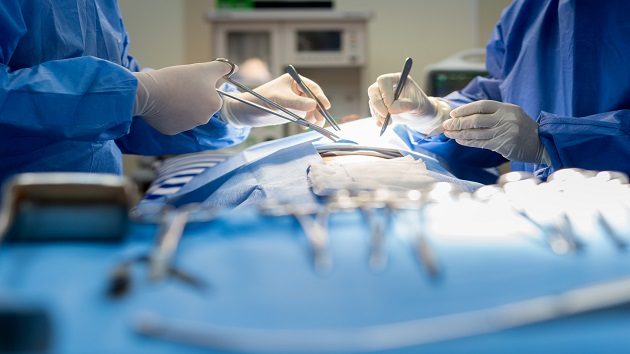
iStock
 iStock(LONDON) — A pair of extremely rare conjoined twins were successfully separated after a total of 55 hours of surgery during a months-long endeavor to help them each live independent lives.
iStock(LONDON) — A pair of extremely rare conjoined twins were successfully separated after a total of 55 hours of surgery during a months-long endeavor to help them each live independent lives.
The odds were stacked against Safa and Marwa Ullah, now 2, from the moment they were born, according to the officials at the London hospital where the surgeries were performed. Not only were the girls conjoined twins — a condition that occurs once in every 2.5 million births — but they were also craniopagus twins, meaning they were joined at the head.
Conjoined twins occur once in about every 2.5 million births, according to officials at the London-based Great Ormond Street Hospital for Children (GOSH). Yet only 5% of the world’s conjoined twins are craniopagus and of that number, about 40% are stillborn or die during labor while another third will die within 24 hours, according to GOSH officials.
The two were successfully separated after three major operations that took place over the course of four months and involved a 100-person team, hospital officials said.
“We are indebted to the hospital and to the staff and we would like to thank them for everything they have done,” the twins’ mother, Zainab Bibi, said in a statement. “We are extremely excited about the future.”
Born in January 2017 in the town of Charsadda in Pakistan, the family traveled to London to the Great Ormond Street Hospital for Children — one of the few hospitals worldwide that has surgeons experienced in separating craniopagus twins.
Owase Jeelani, a neurosurgeon at the hospital who helped lead the surgeries, called the separation procedure “very complex.”
“The secret of doing them properly is like any other complex problem,” he said in a video explaining the surgery. “You break it down into smaller, much more manageable steps.”
The team’s first step was to perform a detailed assessment of the twins, their brains and the blood vessels connected their heads. Once that was completed, the surgeries began. The first surgery took place in October 2018 and the last operation happened in February.
The first two procedures focused on separating the brain and the blood vessels, then placing a piece of plastic between the two brains, according to an animation video explaining the surgery.
The third procedure focused on the skull and used a technique known as tissue expansion to stretch out the skin. The reconstruction was then done with their own bones and covering the top of their heads with the expanded skin.
The collection of surgeries were deemed a success.
“We are delighted we have been able to help Safa and Marwa and their family,” Jeelani said. “It has been a long and complex journey for them, and for the clinical team looking after them.”
The hospital staffers that looked after Safa and Marwa remembered the girl’s distinct personalities.
“Safa has always been a bit boisterous,” Lydia Lowe, a staff nurse, said in the video the hospital released that explained the surgery procedures.
“She’s always been the first to count or speak and Marwa is more cheeky where as soon as Saga goes to sleep, Marwa comes out to shine. It’s like Marwa’s time.”
Jeelani said he is hopeful for the girl’s future and is optimistic they’ll be walking by their next birthday.
For now, they are recovering in a London home with their mother, grandfather and uncle after leaving the hospital on July 1. The twins continue to receive daily treatment and rehabilitation.
Copyright © 2019, ABC Radio. All rights reserved.


